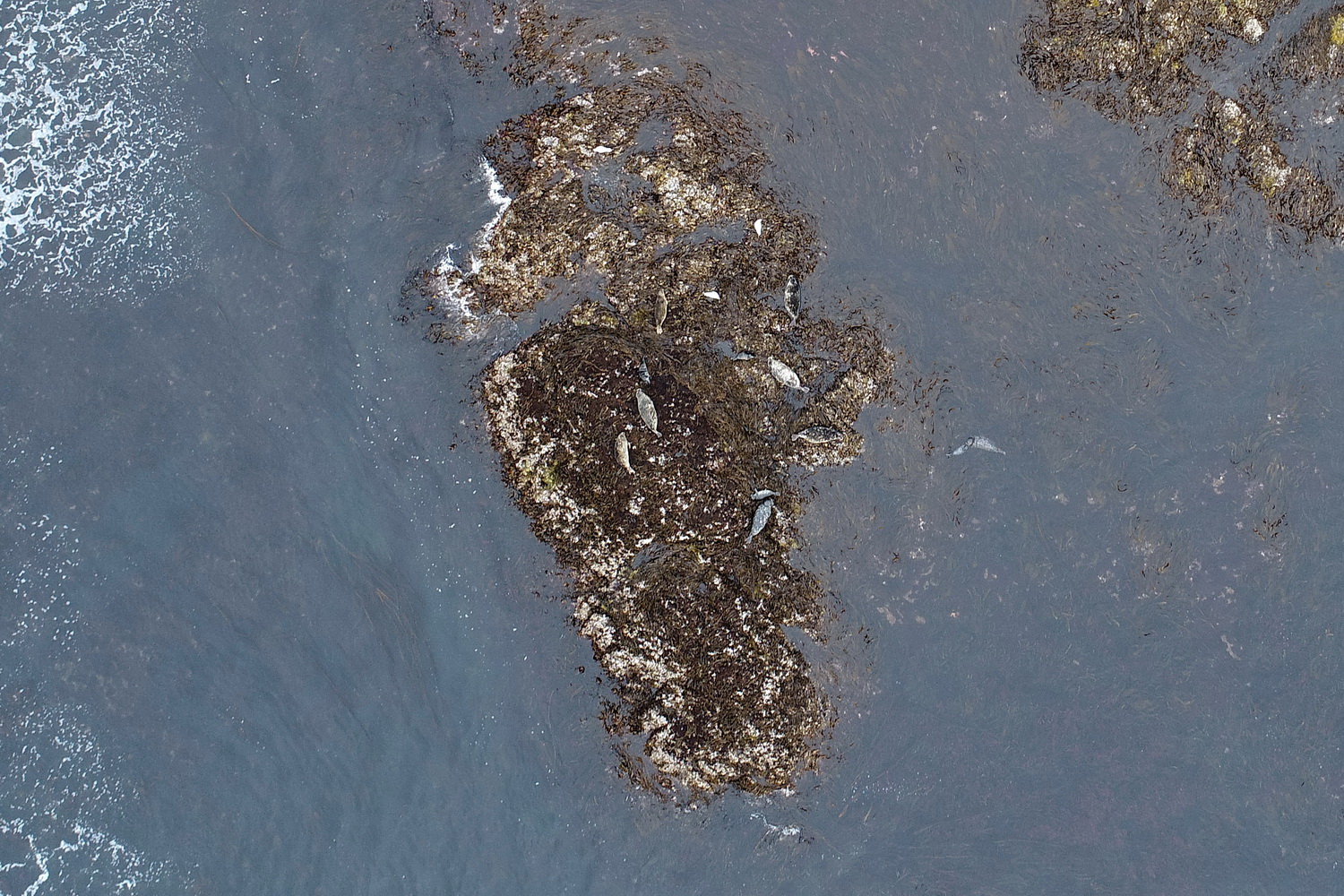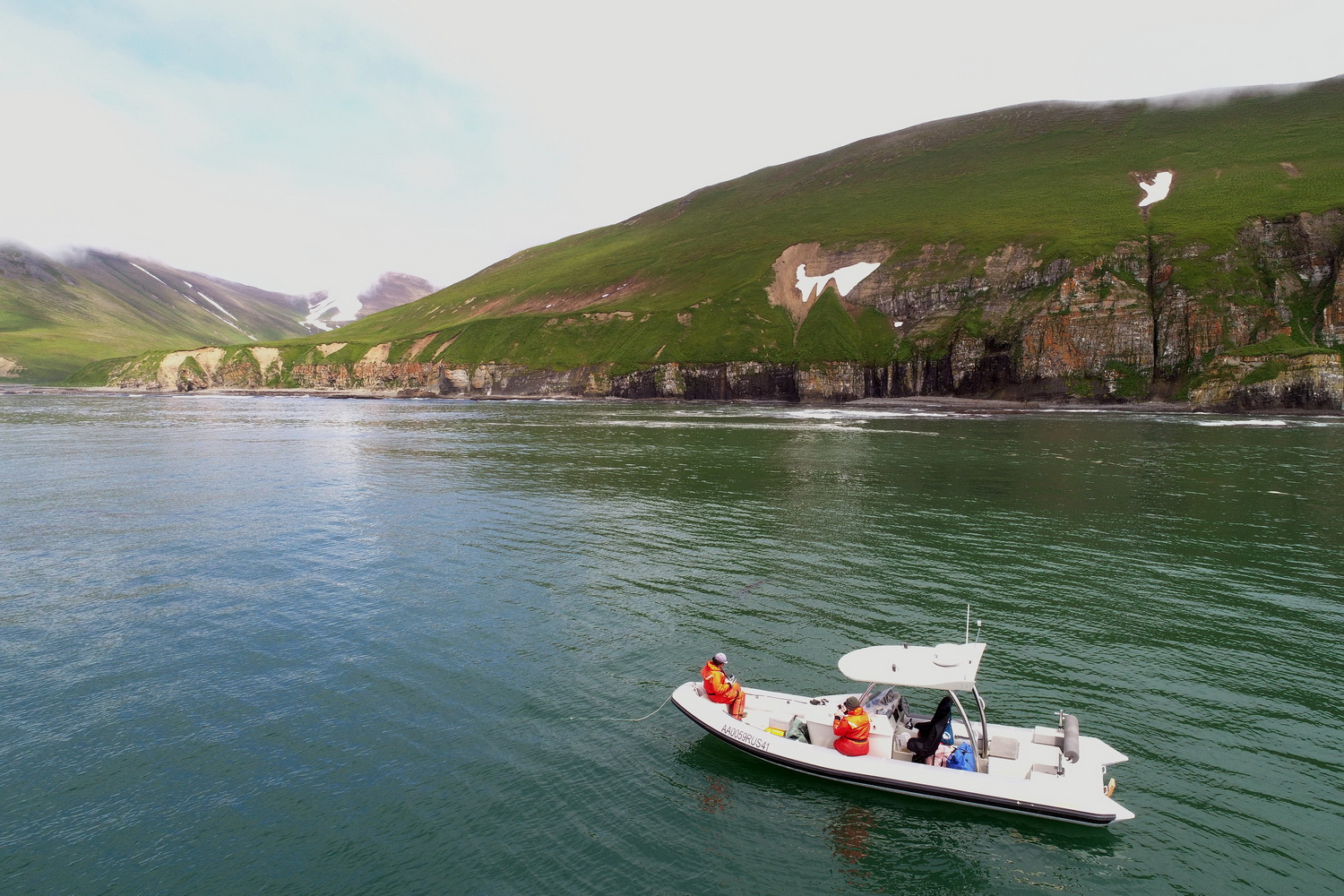A half of Russian harbor seal population – the far eastern subspecies of the common seal – lives on the Commander Islands. Till 2017 the main method of counts on the islands was by observing the animals from boat or from land. However experience has proven that the results of such counts are subjective and depend on many factors, such as distance to the animal, height of the observation point, optics characteristics, personal skills and others. At the same time different countries widely use aerial survey to assess accurately the harbor seal population numbers.
Harbor seal is a very little-studied species, regardless of its big habitat. Scientists know about five subspecies of the common seal, which are formed on the geographical position of the populations. Two subspecies in North Atlantic, on the European shores and on the eastern shores of North America; two subspecies in the North Pacific, on the western shores of North America and around Asia; and one subspecies in the fresh waters of Canada.
Male harbor seal. Photo by Evgeny Mamaev
One of the reasons of small numbers of studies is the dependence of the species on high and low tides. Even during giving birth to their cubs the animals stay on the coastal reefs and leave it when the water rises. Harbor seal pups are able to swim several hours after being born. So the counts are possible only during low tides, when the majority of animals are relaxing on the shore.
A new born harbor seal pup. Photo by Evgeny Mamaev
Our researchers have only 4hours a day to count the animals during maximum low tide. On the Commander Islands we have only two weeks a month of low tide in summer. Moreover, not every day is suitable to ship out, which restricts our time even more. Our goal is complicated also by large number of harbor seal haulouts and a long shoreline. Add to this that the harbor seal is also called the flower seal, because of its coat pattern. The animal is adapted to hide in on rocks covered in sea weed and balanuses and is very hard to find. However, from high above we see a totally different picture.

Harbor seals have a rest on the reefs during low tide. Photo by Evgeny Mamaev
In June and July 2017 the Scientific Department of the Commander Islands Nature and Biosphere Reserve started testing the new method of harbor seals counts, which combines the counts on land and in the sea with photos of haulouts taken from the drone. After the preliminary counts with binocular and spyglass we started the drone from the shore and from the boat. This device flies on a relatively small height and is not very noisy, so it does not attract the attention of the animals, which are very fearful. Even in case of minor or nonexistent danger harbor seal try to hide in the water.

View from the drone: the boat during counts. Photo by Evgeny Mamaev
All together the counts of harbor seals took us two weeks and nine counting days. Within this time the employees of the reserve covered more than 340 km on quadricycles and more than 700 km on a boat. The drone we use covered 87 km with total working time of 409 minutes! Our researchers managed to take 2 188 photos of harbor seal haulouts, which were analyzed later to count thoroughly all the animals.
Harbor seal habitat. Photo by Evgeny Mamaev
Summarizing the results, the counted number of harbor seal on Bering and Toporkov Islands is 1 200 adult individuals and 343 pups. Using the traditional adjustment factor, we estimate the expected population numbers on the Commander Islands to be around 3 000-3 500 individuals. Unfortunately, we have no possibility to compare directly the acquired data with earlier counts, as it is the first time we used the new technology. We have a lot of work to do to bring the results to the common denominator. According to the data, collected in 2000s, only the number of the counted harbor seals on the Commander Islands was estimated at 4 000-4 300 individuals. So the total number of harbor seals at those times could have been 1.5 times higher.
Harbor seal on the reef. Photo by Evgeny Mamaev
The far eastern subspecies of the common seal is one of the rarest in the whole world population after the Canadian subspecies, which lives in fresh water. Harbor seal population in the world is estimated at 6 000 to 7 000 individuals, 3 000-3 500 of which are on the Kuril Islands and 3 000-3 500 on the Commander Islands.
The scientists also collected other important data, which characterize the ecology of the species. We also found out how many individuals were not counted during the traditional visual method of counting. It was the first time, that drone helped us to count the number of harbor seals pups on the Commander Islands. The Commander Islands Reserve is going to continue using the method of aerial survey for harbor seal counts, testing new methods and precise the collected data.









